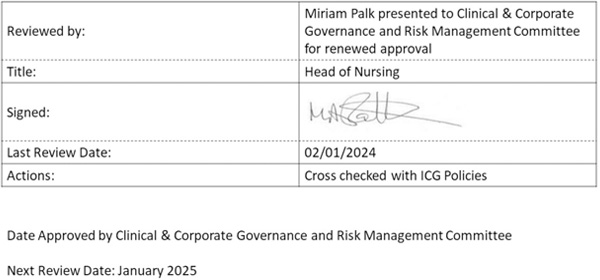VERSION: 1
DATE OF IMPLEMENTATION/REVIEW: 01/09/2021
IMPLEMENTED AND AUDITED BY: James McAlpine
STATUS: Approved
COMMENTS: To be reviewed 01/09/2022
Purpose
To alert employees of the Company to the dangers of fire and identify the preventative precautions which need to be taken.
Statement
It is the policy of the Company to ensure, so far as is reasonably practicable, that all staff, contractors and visitors are protected from the risk of fire whilst on the premises. This policy explains how the Company complies with the Regulatory Reform (fire safety) Order 2005, to ensure that, where possible, fire is prevented and that any fire risks are adequately controlled
Procedure and Guidance
Background
Recent annual statistics reveal Fire and Rescue Services attended 169,588 fires in England, 27,240 fires in Scotland and 10,751 fires in Wales, with 321 fatalities in England, 44 in Scotland and 19 in Wales.
Risk Assessment
Confidence in the arrangements for reducing the potential for a fire to occur in the first place is obtained by ensuring that a comprehensive risk assessment is undertaken in respect of the premises, and this risk assessment is subject to regular review. The fire risk assessment model to be used by the Company is attached. The fire risk assessment asks significant questions which go to the heart of fire safety and the precautions which must be taken at all times. The most significant of these are:
Understanding how fires start
Fires need three things to start – a source of ignition (heat), a source of fuel (something that burns) and oxygen:
Basic measures and precautions
Overall Responsibility
All Health and Safety issues for the Company are the responsibility of the Managing Director, who will ensure that a fire risk assessment is undertaken and regularly reviewed, and that staff are aware of the findings of the fire risk assessment, the measures to be taken, and the precautions to be followed.
Staff Training and Drills
All employees will be made aware, upon joining the Company, of the arrangements in place in the event of a fire occurring, including:
In addition, all employees will be provided with the Health and Safety Executive (HSE) Booklets “Maintaining Portable Electrical Equipment in low-risk environments” and “Electrical Safety and You” as part of their induction training.
All employees are requested to report any concerns they have about fire safety/hazards without delay.
The Company aims for a Fire Drill once a year.
If fire breaks out
The Office has battery-operated fire sensors which are placed at strategic points. These sensors are tested regularly. In the event of a fire breaking out the most senior person on duty will decide whether:
Such decisions will be made without delay. If the Fire Service is called, then the individual doing so will liaise with the senior Fire Officer upon his/her arrival to explain the situation, the layout, areas of significant risk and whether any individual is known to be in the building, or unaccounted for.
Fire- fighting equipment
The office has one fire extinguisher, regularly maintained, which is suitable for electrical fires.
Evacuation
If the Fire Service has been called, then the premises will be evacuated immediately. All employees are instructed not to return to the building or delay their evacuation on account of their desire to retrieve documents or personal possessions. Human life is above everything else.
KLOE Reference for this Policy: Safe
Regulations directly linked to this Policy: Regulation 12: Safe care and treatment
Regulation(s) relevant to this Policy:
